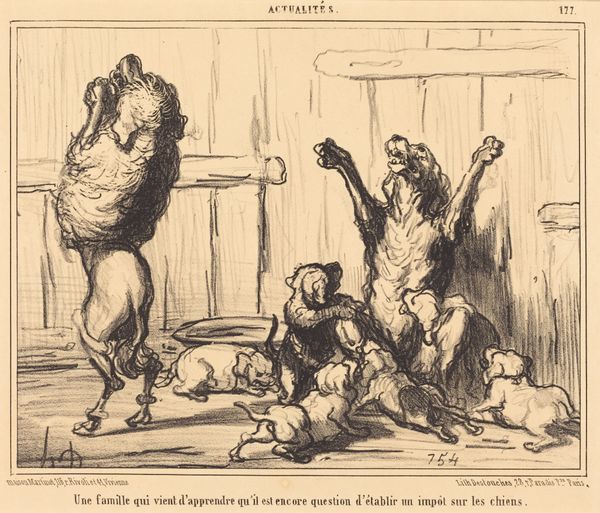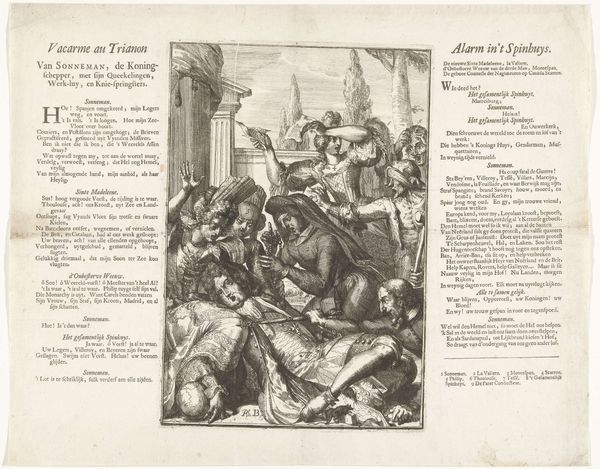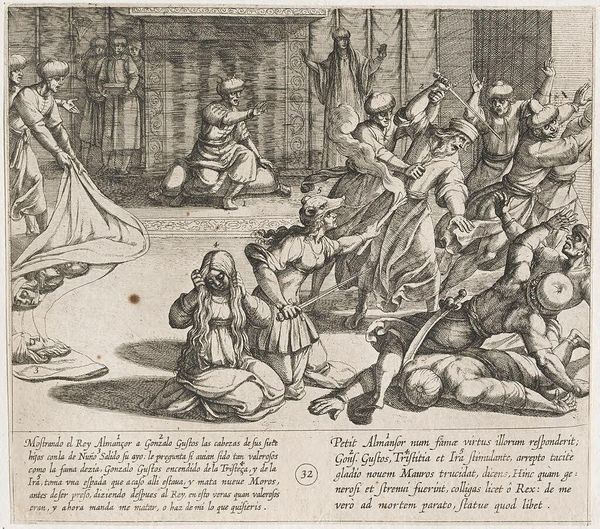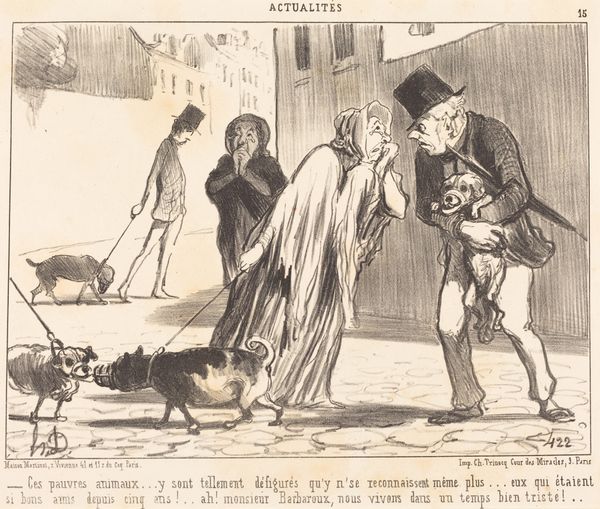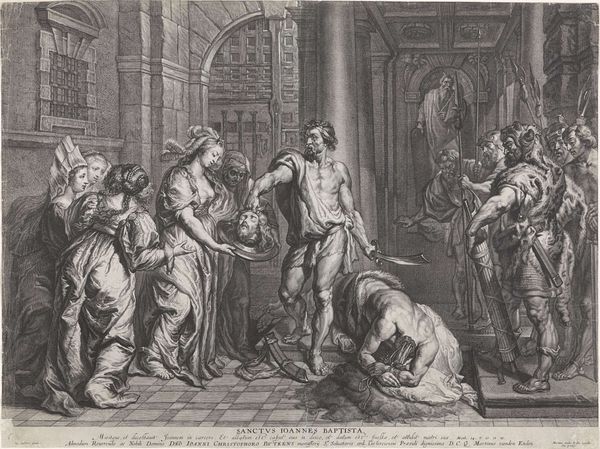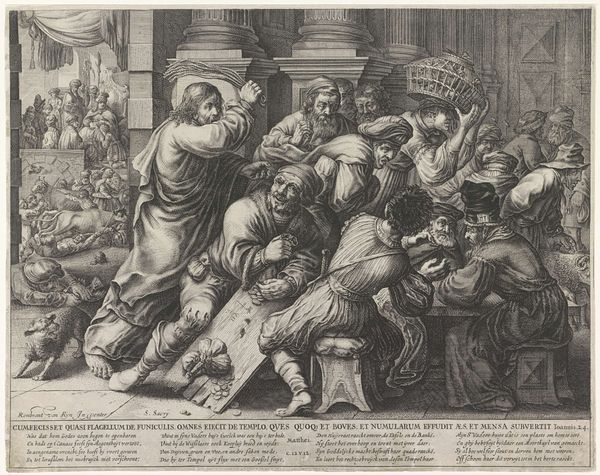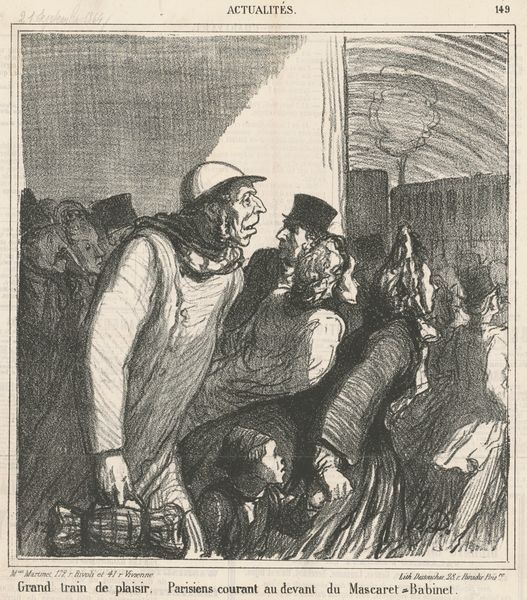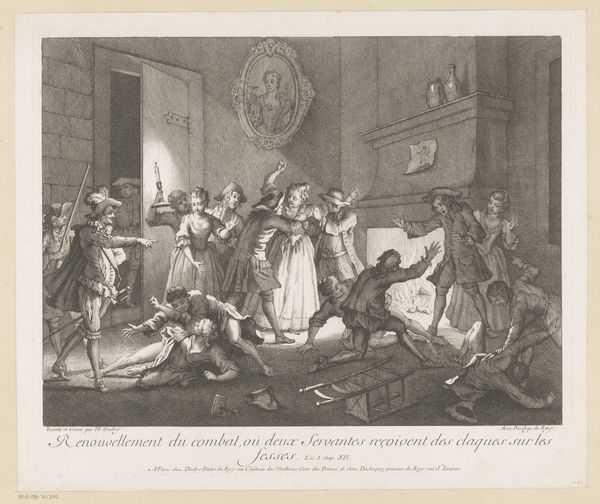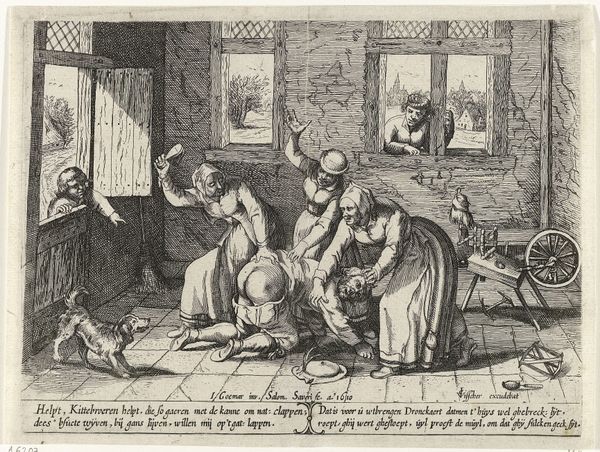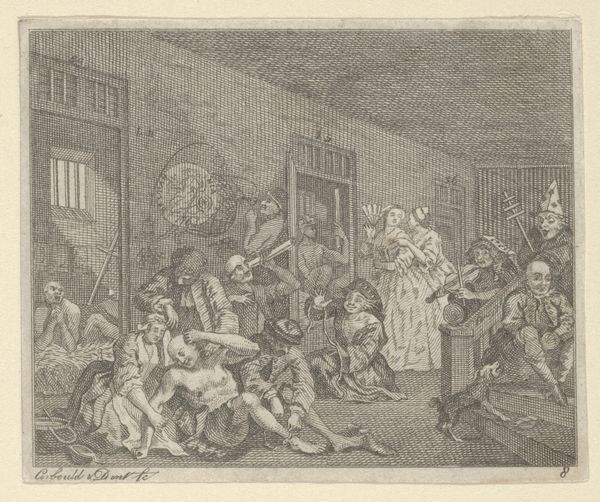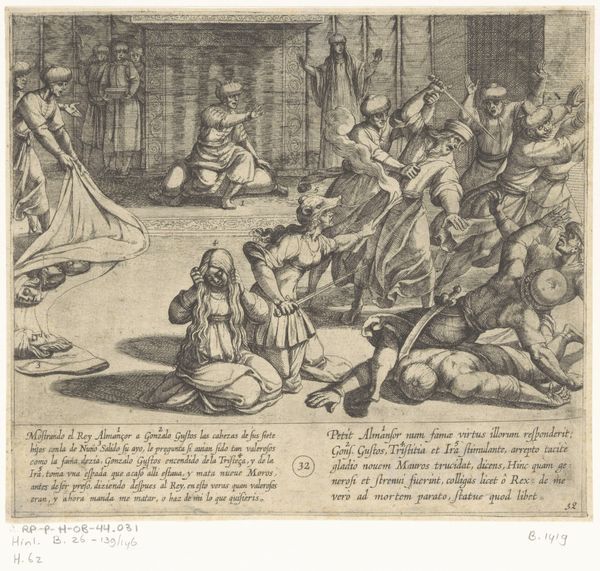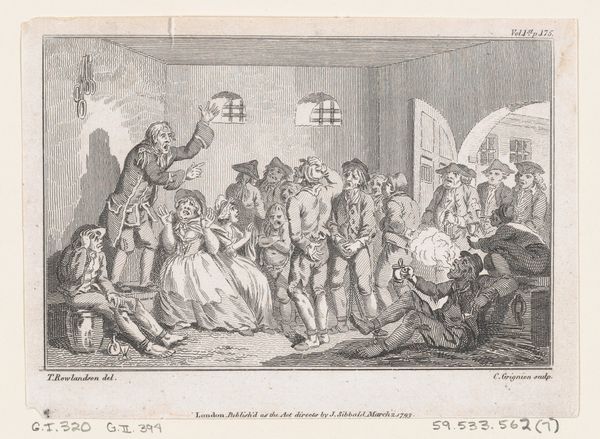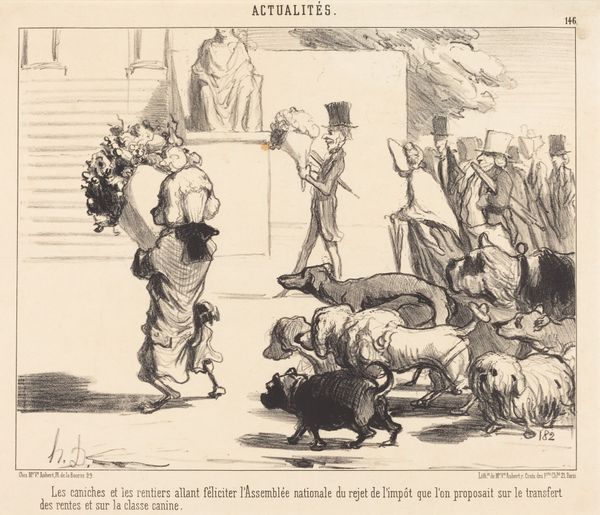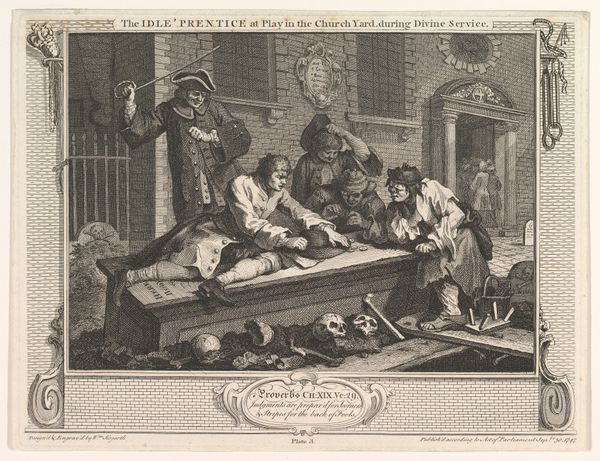
drawing, lithograph, print, ink
#
drawing
#
lithograph
# print
#
caricature
#
ink
#
romanticism
#
cityscape
#
genre-painting
Copyright: National Gallery of Art: CC0 1.0
Curator: Honoré Daumier’s lithograph, "Aspect des rues de Paris depuis..." offers a glimpse into 19th-century Parisian life, but with a distinctly satirical twist. Dating from the mid-1800s, this print captures a specific tension brewing within the city's rapidly changing social landscape. What’s your first impression of this urban tableau? Editor: It's a chaotic, almost tragicomic scene. My eyes are immediately drawn to the heap of humanity strewn across the cobbled street – children and dogs, indistinguishable in their apparent abandonment. The sky seems to weep right along with them. What kind of city treats its inhabitants like this? Curator: Precisely! That emotional jolt is classic Daumier. This print is not merely a depiction of city streets; it’s a biting social commentary on class and access. The full title, “Aspect of the streets of Paris since the owners signified that they would not accept in their buildings, neither dogs nor children,” gives us a crucial clue. Editor: Ah, the full title delivers a punch. The abject state of the children and dogs isn't just incidental; it's a deliberate visual argument. There's a landlord peering out the window with such exaggerated features. Daumier paints him as a malevolent gargoyle. This brings to mind the historical struggles and tension between the city's rising middle class and poor communities, does it not? Curator: Absolutely, the figure at the window is the caricature of the oppressive landlord, unmoved by the plight below. In his time, Daumier aimed to bring socio-political issues to the public consciousness. Editor: And he succeeds, rendering these individuals almost identical through the drawing itself, all relegated to the margins. But there's something almost Romantic about this—notions of alienation, poverty in industrializing cities. Curator: It shows us the stark realities behind the polished facades of Haussmann’s Paris, perhaps more authentically. By capturing the gritty underbelly of the modern metropolis, he urges us to confront the human cost of urban development and social inequality. It makes us ask, progress for whom? Editor: True, and perhaps that's what gives this otherwise bleak lithograph its power. It speaks volumes about then and also whispers quiet truths about now.
Comments
No comments
Be the first to comment and join the conversation on the ultimate creative platform.
